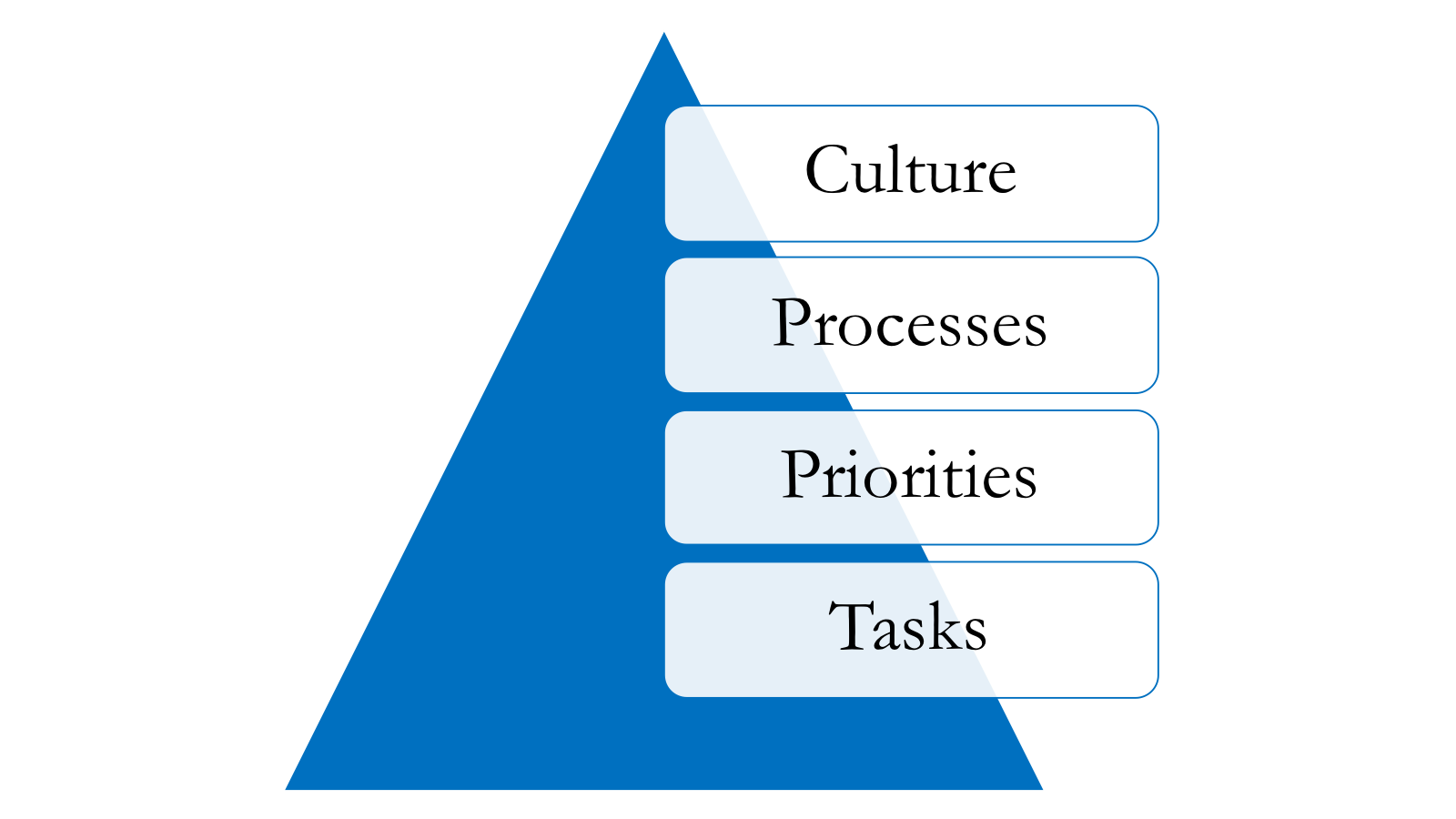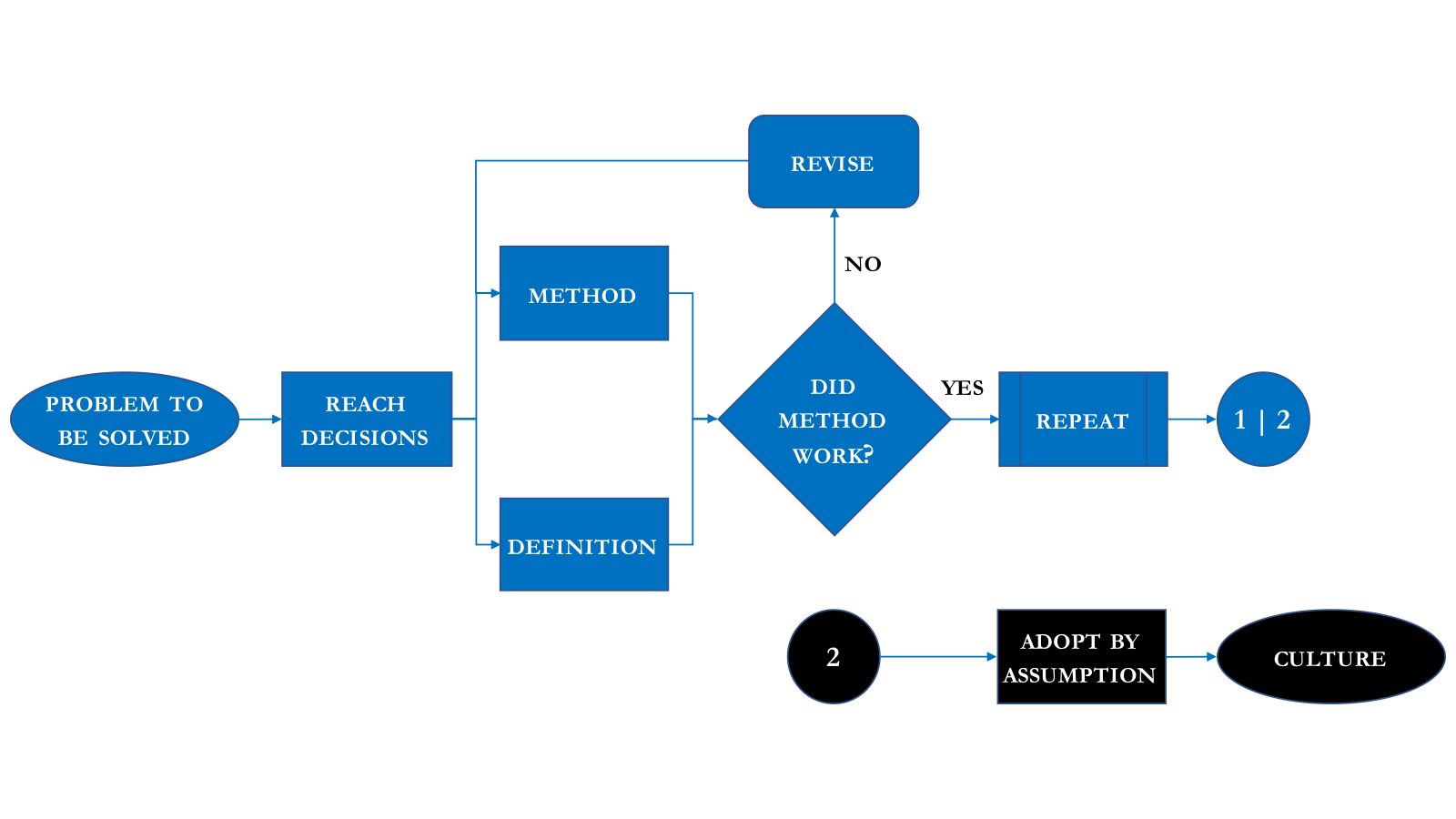
Photo by Marl Clevenger on Unsplash.
Through a top-level understanding of organizational culture we can discover new ways to make sense of the workplace - a primary goal of this blog. We'll start with a better understanding of what organizational culture is. Then, we'll get to know organizational culture in terms of our individual experience.
Culture Is Unique In Every Organization
Did you know? Every organization has a culture. And every culture is unique.
Uniqueness is a great place to start understanding.
Company culture does not naturally transfer from one workplace to another. While children take on characteristics of mom and dad, they're their own persons. In a corporate sense, the same individuality resides amid mergers and acquisitions. Whole company cultures often clash on their way to becoming one. Culture isn't so transportable. It is not a tangible item, like a resource, a gene, or a brand.
Furthermore, it is important not to confuse culture with cultural artifacts, which will be addressed later, independently.
Most interesting I think is that two companies in the same sector, industry and even competing in the same market over seemingly the same product or service have different company cultures. My Marketing professor, Ian Parkman, PhD, proved this in different ways in literally every class through his fictional "Ian's Coffee Shop."

Photo by Ben Stein on Unsplash.
His fictional café was located one week across the street from a Starbucks. It served different pastries the next week. The coffee quality appealed to coffee snobs one week, and those who lacked a palate for floral notes the next. Look around you the next time you're driving down the street. It's true. There are competing businesses in the same strip malls. And they're different, aren't they? Marketing aside, the organizations' cultures differ just as much as the customer experiences, employee experiences, the design of the stores, the attention to details, and so on.
It could be argued that their respective company cultures exhibit themselves as what makes these similar businesses different. It's an intriguing idea, similar to a past topic of personal ambition. Know what? I think I'll write about. Later, though.
Let's start getting into definitions.
Beginning To Define Culture
According to Clayton M. Christensen and Kirsten Shu's case study, What Is an Organization's Culture?, "culture is a unique characteristic of any organization....organizational culture affects and regulates the way members of the organization think, feel and act within the framework of that organization."[1]
While in their definition, culture is itself a framework (i.e. is what it is, is what it is not), Christensen and Shu use the phrase "affects and regulates." Thereby, culture guides us, steers even.
Abstract, sometimes the more conspicuous guardrails are what are called cultural artifacts.
Let's consider cultural artifacts before we get to another definition of organization culture with more practical interpretations. And though I love coffee, I'll use another food to make sense of it all.
Cultural Artifacts: The Way The Cookie Crumbles
Even though every cookie that comes out of an oven looks different, the dough/mix from which they came is the same. Additionally, there's a signature taste from one baker's cookies to another. In my delicious metaphor here, both looks and taste represent what are called 'artifacts' of the culture that is comprised of the dough and the bakers' methods.
Moreover, the smell, taste, texture, gooeyness, appeal, toppings, etc. are surely results of the recipe. That recipe's ingredients, the kitchen tools and even the baker's music played in the background while the cookies were prepared all count as cultural artifacts of the bakery from which the cookies came.

Photo by Ben Stein on Unsplash.
"Artifacts are manifestations of the culture, but are not the culture..." [1] I'll repeat the latter half of that quote: "but are not [themselves] the culture." A manifestation is defined as "an event, action, or object that clearly shows or embodies something, especially a theory or an abstract idea." [2]
Let's consider a real-life example.
Cultural artifacts may be your work benefits. We care about your health. Part of your employment with us is a free gym membership. Culturally, the employer may believe that a well-balanced lifestyle, including physical fitness, is a way of life at the company. Contrastingly, that gym membership being a cultural artifact may prove the cultural opposite. If the company works its employees to death, then there isn't time to go to the gym. The cultural artifact is merely the lipstick on the proverbial pig.
Tangible and Intangible Elements of Culture
The Tangibles
"What a thoughtful manager must be careful to observe are the processes and priorities that people instinctively employ when solving problems and making decisions." [1] Culture isn't so operational, i.e. culture is not explicitly tasks, priorities, and processes. Those elements are, for this area of understanding, the tangible components to be considered. Still another definition of organizational culture illustrates.
Edgar H. Schein, in his book, Organizational Culture and Leadership, defines culture in the following way:
a pattern of shared basic assumptions that was learned by a group as it solved its problems of external adaptation and internal integration, that has worked well enough to be considered valid and, therefore, to be taught to new members as the correct way to perceive, think, and feel in relation to those problems. [3]
I've described the tangibles in the above hierarchy. In a workable sense I interpret Schein's definition in the following process map:

The Intangibles
The intangibles are Schein's "perceive, think, and feel in relation to those problems." They're very similar to Christensen and Shu's "think, feel and act."
These almost sensory basics come with the humanity of those who partake in tasks, priorities and processes (and priority and process development).
For example, those who work in a deadline-driven Food Network show operate amid a very different organizational culture than do a group of YouTubers. The independent cooking show publishes whenever it's ready. Food Network has a strict schedule to keep. The content may be the same, say a segment comparing the use of regular, granulated sugar versus brown sugar in a cookie recipe. Distinct differences in the what Christensen and Shu call "the framework of that organization" may impact how the content gets made, e.g. responsibilities, accountabilities, qualities, tone, features, teamwork, workspace, oversight, and more are intangible expressions of underlying culture that resolves efforts into an end product.
Remember, every organization has a culture. And every culture is unique.
Culture: A Guarded Family Recipe
Basically, culture begins and ends with What's the problem to be solved and how do we solve it? I italicized the word 'we' because that is so crucial to understanding culture.
For a third time in this post, every organization has a culture. And every culture is unique. The way 'we' make our cookies differs ever so slightly from the way you do.
Sure, there's a lot more to it. But operationally, cultures comes down to unique tasks that meet priorities turned into business processes that solve problems to the point that assumptions of efficacy may be made...concerning all activities, perceptions, behaviors, manifestations and methodologies.
A final metaphor. Family recipes are unto the family. They're secret, analogous to unique. And they're passed down from one generation to the next because the tasks, priorities, and processes work to make that amazing outcome, tried and true.

Photo by Ben Stein on Unsplash.
While discussing the uniqueness of organizational culture, I wrote
...organizations' cultures differ just as much as the customer experiences, employee experiences, the design of the stores, the attention to details, and so on.
It could be argued that their respective company cultures exhibit themselves as what makes these similar businesses different.
Allow me to put a different, yet familiar spin on that thought.
Organizational culture is to strategy as personal ambition is to purpose.
They're different, culture and strategy, but manifestly related; similarly, personal ambition and purpose are very much intertwined. It may be said that every company has a personal ambition, or “the total mix of one’s personality, character, motivation and aspirations.” To an extent, and as I've detailed with organization design, people stretch culture as might a rolling pin with dough. The dough doesn't outright change, though.
Organizational culture can change, mind. "A key is that culture is an organic, relatively open system, so it grows rather than gets built." [4] That family recipe might be even better if only made during the holidays, with double the chips, or shared with the next generation after the age of 8, or used as a reward for mowing the lawn, or...
The bottom line is that culture is all around us--inside us all--in the workplace. Always. The way the organization 'feels' is culture. The manner by which we achieve results is culture - as expressly assumed that that is how results get produced. Our ability to sense progress, individuality, power, what problems get solved, rewards and consequences,... All of it is organizational culture. Add to that cultural artifacts--what they actually express--and you'll begin recognizing your workplace in a way you might not have before.
[1] Christensen, Clayton M., and Kirsten Shu. What Is an Organization's Culture?. Boston, MA. President and Fellows of Harvard College, 1999. Case Study.
[2] "Manifestation". Apple Dictionary. Apple, Inc., Accessed 11 June 2022.
[3] Schein, Edgar H. Organizational Culture And Leadership (Jossey-Bass Business & Management Series). 3rd ed., John Wiley & Sons, Inc., 2004. p. 17.
[4] Meckler, Mark. Email to Danny Rehr. "Papers/Books On Org Culture?". 21 October 2021.
